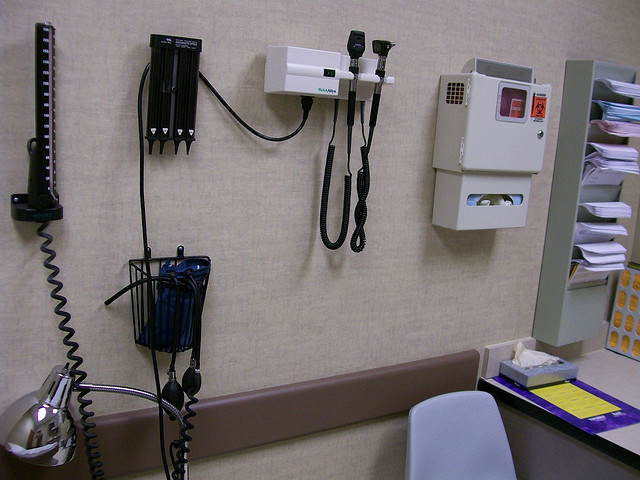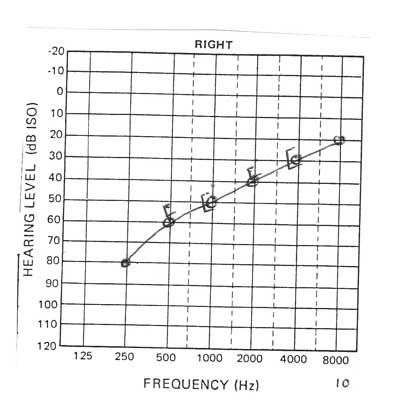If the unknown generates anxiety, then a trip to the hearing specialist is especially nerve-racking. While nearly all of us have experience with the family doctor and the hometown dentist, the visit to the hearing specialist could be a first.
It certainly would be beneficial to have someone elaborate on the process up front, wouldn’t it? Well, continue reading, because as you’ll discover, the process of getting your hearing tested is usually straight forward, comfortable, and pain-free — with parts that can actually be fun.
So here’s how it will go:
After you arrive at the office, you will check in with an employee at the front desk who will hand you a few forms to fill out. Shortly after submitting the forms, a hearing specialist will come with you into a room to get started on the hearing assessment, which is composed of four parts:
Part 1: Case History

The hearing specialist will begin the process by getting to know you, your health history, and your hearing loss symptoms. Getting ready for this step is important, because this is where you get to tell the hearing specialist the specifics of your hearing loss, what you are expecting from treatment, and your unique hearing needs.
This portion is all about you: what do you want to achieve with greater hearing? Do you have the desire to play a music instrument again? Do you wish to be more involved in work meetings? Do you want to be more energetic at social gatherings? The more you can describe to your hearing specialist the better.
Next comes the testing.
Part 2: Otoscopy
The initial diagnostic test to be completed is termed an otoscopy. An otoscope is used to visually evaluate the ear canal and eardrum to check if your hearing loss is associated with infections, earwax accumulation, or obstructions. If the reason for your hearing loss is something as uncomplicated as earwax buildup, you could possibly start hearing better within moments simply from professional earwax removal.
Part 3: Tympanometry
The next test is termed tympanometry, used to test the eardrum and middle ear. A gadget is placed into the ear that will change the air pressure, calculating how your ear reacts to a variety of pressures.
To fully grasp this test, you have to first understand that hearing loss falls into one of two general classes:
- Sensorineural hearing loss — this is the most regularly occurring hearing loss. It is also described as noise-induced hearing loss and it involves destruction of the nerve cells of hearing.
- Conductive hearing loss — this hearing loss results from clogging or obstructions that constrain sound transmission before the sound arrives at the nerve cells of hearing.
Tympanometry is a test that can help to rule out conductive hearing loss, to make certain that there are no blockages, infections, or middle-ear-bone complications. Conversely, Audiometry, which is explained next, will measure sensorineural hearing loss.
Part 4: Audiometry

The final group of tests will be conducted in a soundproof room. These tests are jointly referred to as audiometry and will measure your hearing range and sensitivity. Audiometry is the best means to measure sensorineural hearing loss.
With the use of an audiometer, the hearing specialist will be ready to pinpoint:
- Which frequencies you can hear comfortably and which you have a tough time with.
- The minimal decibel levels, at varied frequencies, at which you perceive sound.
- The precise calculations associated with your hearing loss (as documented on an audiogram).
- Your ability to fully understand speech, with or without background noise.
The test on its own, from your standpoint, will be comfortable and uncomplicated. You will be presented with sounds and speech through headphones and will be directed to specify when you can hear the sounds by pressing a device or lifting your hand.
Assessing results and planning treatment
Shortly after the testing is finished, your hearing specialist will discuss your results with you. If your hearing loss requires medical or surgical treatment (due to infections or middle-ear-bone problems, for instance), your hearing specialist can make the applicable referral.
If your hearing loss can reap benefits from assistive listening devices or hearing aids, your hearing specialist will collaborate with you to decide on the ideal solution for you, your finances, your lifestyle, and your cosmetic concerns.
Pretty painless for a lifetime of better hearing, isn’t it?

